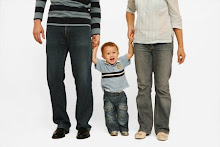 Last week I was asked what would be the best store entry strategy in China for a particular new luxury skincare brand. It was a very specific request because the brand is already in China, albeit with little to no awareness of it's presence, plus they had a very real offer to operate a 2 week trial space in the promotional area of a Shanghai department store. If they perform well during the 2 week trial period, they will secure a permanent space in the store but if they don't then...that's it, out! So a very critical 2 weeks to say the least.
Last week I was asked what would be the best store entry strategy in China for a particular new luxury skincare brand. It was a very specific request because the brand is already in China, albeit with little to no awareness of it's presence, plus they had a very real offer to operate a 2 week trial space in the promotional area of a Shanghai department store. If they perform well during the 2 week trial period, they will secure a permanent space in the store but if they don't then...that's it, out! So a very critical 2 weeks to say the least.Anyone with even a half-baked understanding of the Chinese consumer market will be able to tell you that point-of-sale activities are one of THE most effective ways to spend your limited marketing dollars. Of course, the usual sexy ATL stuff, PR and new media should also be part of your toolbox but POS activities (or BTL, the larger category to which POS activities belongs to), are so closely linked to sales results that it should constitute a key part of any marketing plan, and does not deserve relegation to it's sometimes poor Cinderella status. True, it may not seem as strategic as ATL or as glamorous as PR but when handled properly, it not only drives brand awareness, helps educate consumers about your brand story and gives customers real value, but also keeps you in the department stores' good books and not least, brings out shining sales results without breaking the bank.
Why are POS activities so effective? The 2 main reasons are the spontaneous nature of purchase decisions (back in the day, working in a large FMCG company, we estimated that in the region of 70% of purchase decisions in China were made in-store); and secondly, POS activities are very targeted and hence helps cut through the clutter ie. you capture the right audience, at the right place, with the right message. And the cherry on the cake - the costs are low and the results are easily measurable. In the current climate, that's surely enough reason to give it some serious thought.
More in a later post on what constitutes good POS activity.







